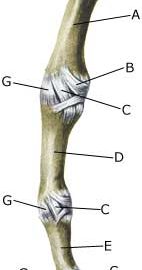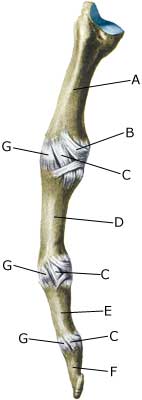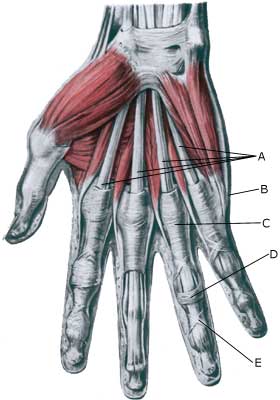|
||
|
||
|
||
| Cause: In case of a blow, twist or over-stretching, a rupture can occur on the ligaments and cartilage discs (fibrocartilago), that surround the finger joints. In some a piece of bone can be torn off where the ligaments fasten on the side of the bone.
Symptoms: Ligament damage will typically cause a swelling of the joint and tenderness on the side of the joint which is aggravated if the joint is twisted from side to side. With damage to the cartilage disc (laesio fibrocartilaginis volaris) under the joint, the pain will be localized to the underside of the joint (volar) which is aggravated with passive over-stretching and maximal flexing of the joint. Acute treatment: Click here. Examination: With sudden powerful pain in a finger it is advisable to have the joint examined to ensure a correct diagnosis and treatment. The results are best if the diagnosis is made and the treatment is commenced immediately following the injury (article). A tearing of the ligament anchor on the side of the finger is occasionally visible on x-rays. Treatment: The vast majority of ligament ruptures can be treated without surgery, while other ligament ruptures with clear laxity require surgery. It may be necessary to perform an x-ray, ultrasound scan (article 1) or an MR-scan (article 2). Damage to the cartilage disc is often treated with a splint on the finger for about 3 weeks, although not all physicians agree with this (article 3). Rehabilitation: Fitness training in the form cycling and running along with rehabilitation according to the guidelines under rehabilitation of children and adolescents in general can usually be commenced immediately. Once the pain is completely gone you can participate in sports, although handball, volleyball, basketball and similar activities should be avoided for a few additional weeks. Bandage: It will often stabilise the joint if the damaged finger is taped to its neighbour (tape-instruction). Complications: In the vast majority of cases the ligaments heal without complications. In some cases, particularly after a lesion of the cartilage disc under the joints, long-term discomfort can continue for as long as a year after the injury (article). In cases of persistent pain and lack of progress you should consult your doctor again. |



